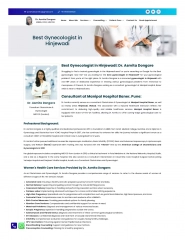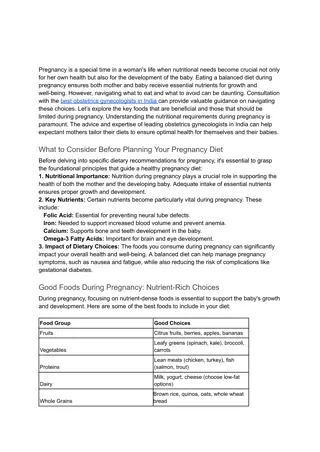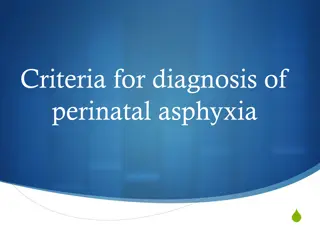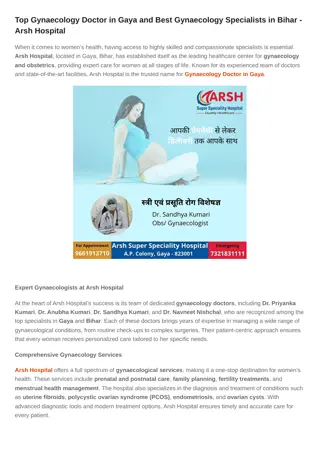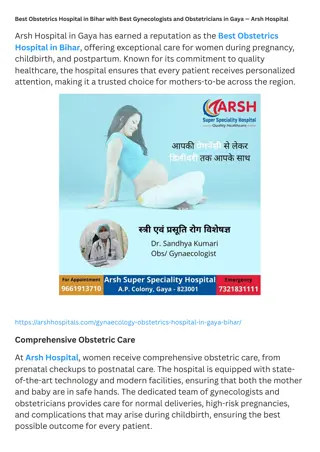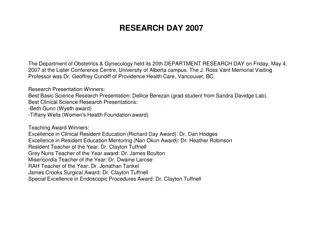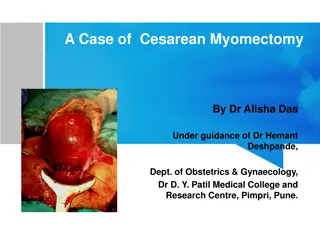Department of obstetrics
Oxytocin and Ergometrine are commonly used drugs in obstetrics for inducing labor, managing the third stage of labor, and preventing postpartum hemorrhage. Oxytocin's mechanism of action involves uterine stimulation, while Ergometrine acts as a uterine and vascular smooth muscle contractor. However, both drugs have potential side effects on cardiovascular health and other adverse reactions such as hypertension, nausea, and vomiting. Understanding these drugs' clinical use and possible complications is essential for safe obstetric care.
Download Presentation

Please find below an Image/Link to download the presentation.
The content on the website is provided AS IS for your information and personal use only. It may not be sold, licensed, or shared on other websites without obtaining consent from the author.If you encounter any issues during the download, it is possible that the publisher has removed the file from their server.
You are allowed to download the files provided on this website for personal or commercial use, subject to the condition that they are used lawfully. All files are the property of their respective owners.
The content on the website is provided AS IS for your information and personal use only. It may not be sold, licensed, or shared on other websites without obtaining consent from the author.
E N D
Presentation Transcript
Drugs in obstetric & gynecology College of medicine Department of obstetrics Al Mustansiriyah university
oxytocin The word oxytocin was derived from Greek meaning "quick birth" Oxytocin is a peptide of nineaminoacids (a nonapeptide Strong rhythmical contraction of myometrium Large doses- sustained contraction( placental blood flow & fetal hypoxia/death) Clinical use: 1- IOL (IV infusion 3U syntocinon+50 ml of saline) 2- Augment slow labour (IV infusion sameas above) 3-3rdstageof labour- 5 U IM for HTN ,cardiac disease - IV infusion 40 U in 500ml saline ( PPH) 4-Surgical terminationof preg./ERPC- 5U slow IV
Oxytocin 10 IU/1ml/amp, in 500ml N/S, 20 mU/ml Moad of action :Uterine stimulant, by increasing intracellular concentrations of calcium in uterine myometrial tissue OXYTOCIN also has pressor and antidiuretic activity which may be exhibited with high doses Antidiuresis appears to be initiated by the direct action of oxytocin on the kidney. The action of the drug stimulates renal tubularabsorptionof free water.
SE: Cardiovascular: - The cardiovascular effects of oxytocin used postpartum consist of HYPOTENSION followed by a period of HYPERTENSION - arrhythmias - peripheral arteriospasm - myocardial infarction: coronary artery spasm(?) maybe related to supine hypotension, epidural anesthesia, ephedrine, cigarette smoking, intravenous oxytocin
Others: Nausea and vomiting, uterine hypertoniaor rupture uterus, flushing
Ergometrine 0.2mg/1ml/amp : is an ergot derivative with direct uterine and vascular smooth muscle contractile properties Dose :give IV only in emergency because of potential for HTN & CVA. Give over >1 min & monitor BP. Sideeffects: hypertension, thrombophlebitis, leg cramps, ruptured uterus. Nausea, vomiting, abdominal pain, chest pain, palpitation, Stroke & MI
Clinical use: 1- Management of 3rdstageof labour 0.2 milligram after delivery of the anterior shoulder, after delivery of the puerperium, which may be repeated every 2 to 4 hours as needed This drug should not be routinely administered intravenously because of the possibility of inducing sudden hypertensiveand cerebrovascularaccidents placenta, or during the
If intravenous administration is considered essential as a life-saving measure, Methergine should be given slowly over a period of no less than 60 seconds, with careful monitoring of blood pressure 2 - Management of PPH - 2nddose give. Alternatively IV ergometrine can be given (works with in 40 sec)
Contraindications: hypertension and cardiac disease. It is usuallycombined with oxytocin as syntometrine. Syntometrine IM: 5U syntocinon(rhythmiccontraction in 2min) + 500 g ergometrine(sustained contraction in 7 min)
Dinoprostone ( prostin E2) Vaginal pessary/gel Clinical use: IOL 3mg 6hrs apart ( no more than 2 pessaries in 24hrs and max. 3 doses) Side effect: Nausea ,vomiting, diarrhoea, fever, Uterine hyperstimulation , HTN, bronchospasm Advantages : - Mobile patient -Reduce need for syntocinon
Carboprost ( Hemabate) Dose ; 250 g doses. (OR Intra-myometrial use at C/S) deep IM repeated every 15 min max 8 Side bronchospasm, dyspnoea, pulmonaryoedema, HTN, cardiovascularcollapse effects: Nausea ,vomiting, diarrhoea, fever, Clinical use: Postpartum haemorrhage
Antihypertension Methyldopa It is a centrally acting 2-adrenergic agonist Dose: The usual starting dosage of Methyldopa tablet is 250 mg two or three times a day in the first 48 hours then the Maintenance dose is 500 mg to 2 g in two to four doses. Indications: gestational hypertension (or pregnancy induced hypertension) and pre-eclampsia. Side effects : it is relatively safe in pregnancy compared to many other antihypertensive which may affect the fetus , however it is produce a number of side effect include: SE :Headache,dizziness,dry mouth , postural hypotension,nightmares, mild psychosis, depression,hepatitis & jaundice
Important to stop drug in postnatal period - Labetolol 100-200mg BD/TDS PO max 2.4g/24hr ACE inhibitors are contraindicated in pregnancy
hydralazine It is a direct-acting smooth muscle relaxant. Dose: Dilute hydralazine 1 mL(20 mg) with normal saline, the initial dose is 5-10 mg as ordered given by slow intravenous injection over 2 minutes. Blood pressure is taken at 5 minute intervals for at least 20 minutes following each bolus. After 15 minutes, depending upon response, a second dose of 5 mg may be given. Note that the maximal effect occurs 15-20 minutes after each bolus if still no benefit give maintenance dose. Indications: Intravenous hydralazine is used for the acute control of blood pressure in pre-eclampsia and eclampsia. Side effects: Facial flushing and headache, tachycardia, nausea, vomiting, dizziness, anxiety and tremor.
steroid Use between 32-34 weeks arguable- may no benefit RDS but may benefit IVH up to 34 weeks Regimens: -Betamethasone 12 mg IM, 2 doses, q 24 hr -Dexamethasone 6 mg IM, 4 doses, q 12 hr
Maternal Adverse Effects Short term: glucose control, pulmonary edema, infection Long term: no adverse effects Fetal Adverse Effects No long term effects of single course Multiple course associated w/ infection, abnormal development
Tocolytic drug Beta-mimetics Function: Stimulate beta2 receptors in uterus and lung, decrease contractility Salbutamol inhaler- 100 mcg x 2 puffs stat Terbutaline- 250 mcg subcutaneous Clinical use: both drugs are used for short term. (i) relaxing uterus at C/S (ii) ECV procedure
Side effect: Tremor, nervousness, N/V, anxiety, SOB, palpitations, chest pain Hyperglycemia, electrolyte abnormalities Fluid retention, Hypotension, pulmonary oedema Headache, tachycardia, MI ,arrhythmias, hypotension & collapse
Contra indications Absolute: Maternal cardiac disease, eclampsia, severe pre-eclampsia, hemorrhage, uncontrolled hyperthyroid, diabetes Relative: Diabetes, hypertension, migraines, sepsis
nifidipin Calcium Channel blocker Clinical use: Mild to moderate hypertension- 5-20 mg TDS/PO Severe HTN- 10 mg Retard/PO Tocolytic- Incremental doses every 20 min until contraction stop, then 20 mg TDS/PO Side tachycardia, hypotension,sweating & syncope. effects: Headache,dizziness,palpitation,
Magnesium sulphate Clinical use: Prevention & treatment of seizure in eclampsia / severe pre eclampsia Dose: 4g IV stat then 1g/hr to be continued 24hr after last seizure Side drowsiness,confusion,loss of tendon reflexes, hypotension, decrease U/O, respiratory depression, arrhythmias,cardiac arrest effects: nausea,vomiting,flushing, Because of toxicity, Mg levels monitored
Magnesium sulphate Crosses placenta, no adverse fetal effects (may have less reactivity) Contraindications: Myasthenia Gravis, renal failure, hypocalcemia Exam: Fluid I/O, UOP, VS, mental status hourly Pulm exam Reflexes (loss when level >8) Therapeutic level: 5.5-7.5 mg/dl, toxic >15 Antidote: calcium gluconate
Oral Iron Ferrous Sulfate (Feosol) 300 mg tid Side Effects are extremely mild: Nausea, upper abdominal pain, constipation or diarrhea. Cheapest form of Iron and one of the most widely used Parenteral Iron Dextran (Imferon) IM or IV Indicated for patients who cannot tolerate or absorb oral iron or where oral iron is insufficient to treat the condition ie. Malabsorption syndrome, prolonged salicylate therapy, dialysis patients
Folic acid Source in food yeast, egg yolk, liverand leafyvegetables Folic Acid (F.A.) is absorbed in thesmall intestines. F.A. is converted to tetrahydrofolate bydihydrofolate reductase. Folic Acid deficiency (F.A. Deficiency) is also called Will s Disease. Deficiency may produce megaloblastic anemia; neural tube defect in fetus. Used for treatment of megaloblastic deffecinecy,used Given preconception and throughout the pregnancy anemia due to folic acid neural tube to prevent defect.
Folic acid Folic acid is a vitamin B Dose: as prophylactic 0.4 mg one tablet per day as therapeutic 5mg one tablet per day Indications: as prophylactic start taking folic acid tablets before becoming pregnant and Continue to take folic acid tablets for the first 12 weeks of pregnancy. as therapeutic indicated in: 1-previously affected pregnancy. 2- mother has family history of spinal cord defect 3-mother takes medication for epilepsy. 4-obese women- especially if the Body Mass Index (BMI) is 30 or more 5-women have celiac disease, diabetes, sickle cell anemia, or thalassaemia.
Anti-D (Rho) Immunoglobulin available as 250, 500 and 2500 IU vials, for intramuscular use only Indications Miscarriage, ectopic pregnancy or termination of pregnancy
250 IU anti-D Ig is given up to 19+6weeks of gestation and 500 IU thereafter. A test for the size of feto-maternal haemorrhage (FMH) should be performed when anti-D Ig is given at or after 20+0 weeks of gestation: Anti-D Ig is not required for spontaneous miscarriage before 12+0weeks of gestation, unless there is instrumentation or medical evacuation of the uterus. It should be considered in women if there is heavy, repeated bleeding with abdominal pain as she approaches 12+0weeks of gestation.
Anti-D spontaneous miscarriage before 12+0 weeks of gestation, unless there is instrumentation evacuation of the uterus. It should be considered in women if there is heavy, repeated abdominal pain as she approaches 12+0 weeks Ig is not required for or medical bleeding with of gestation.


